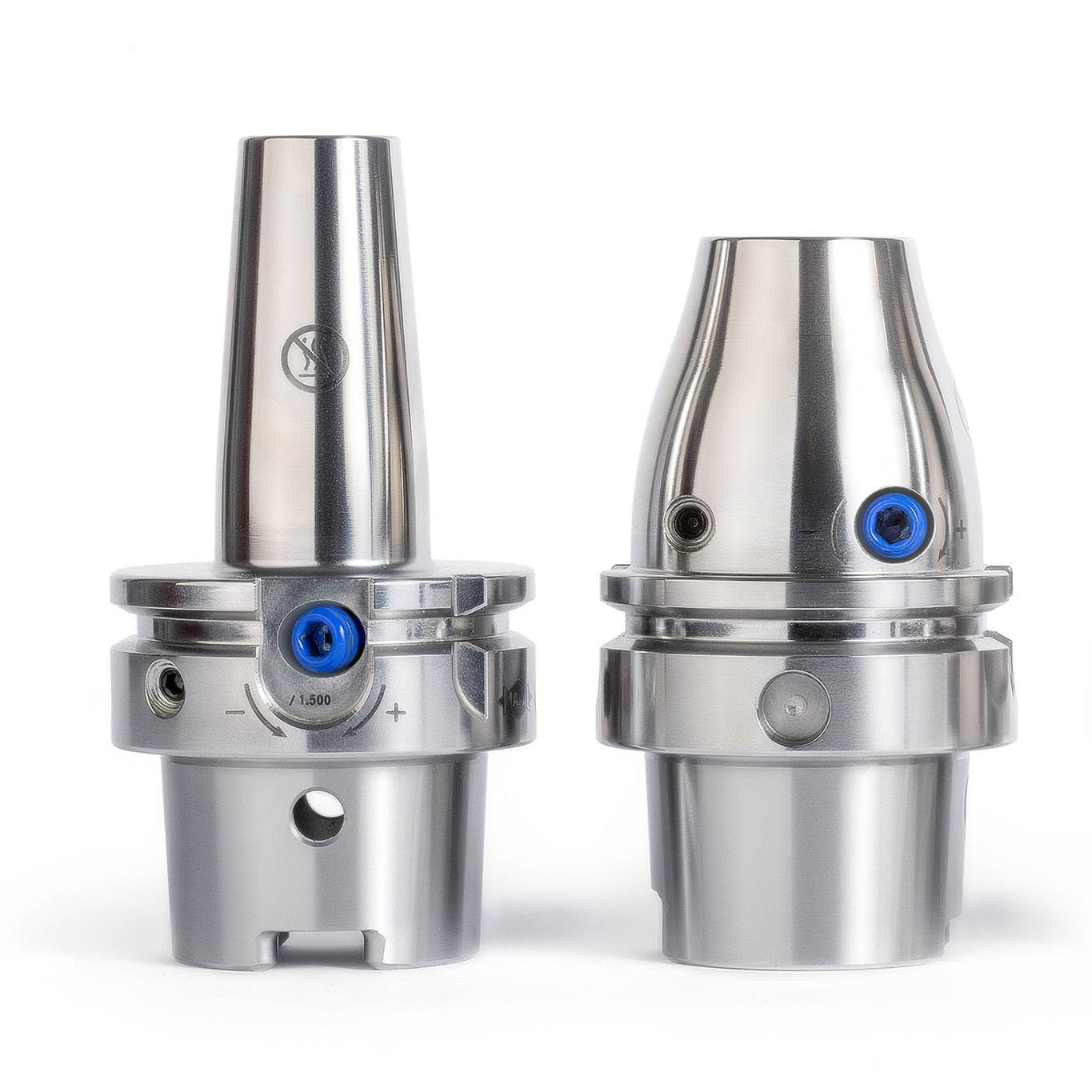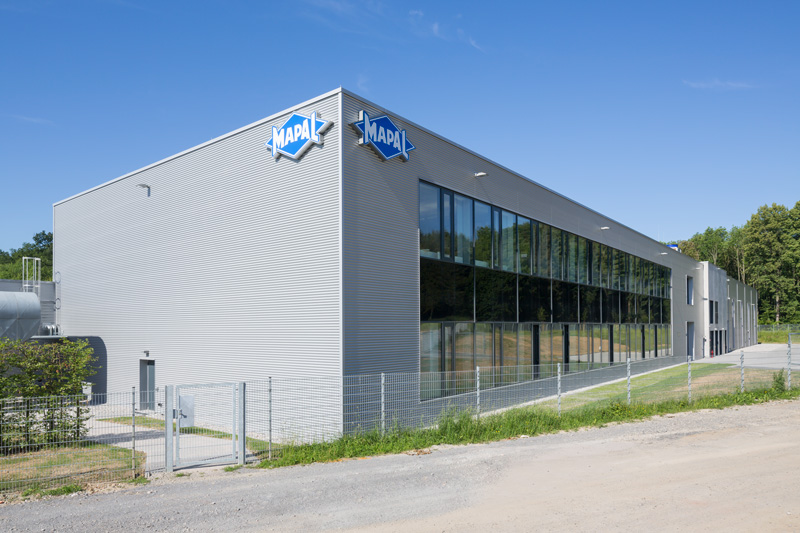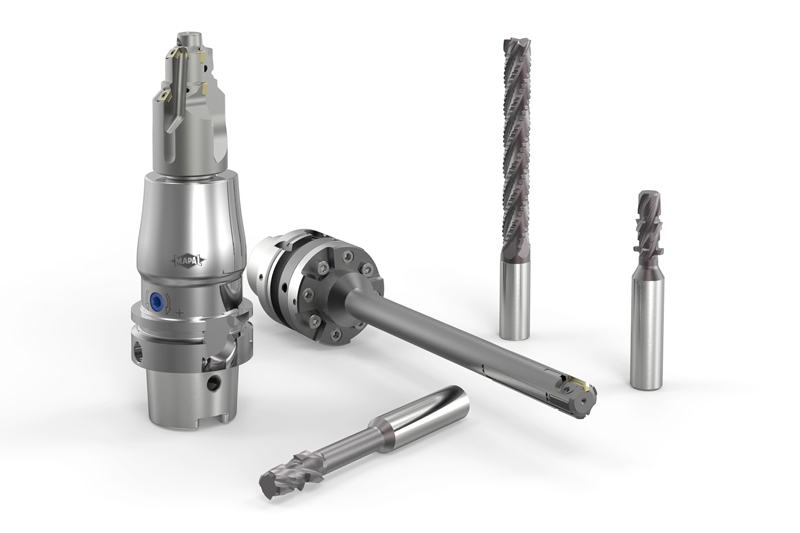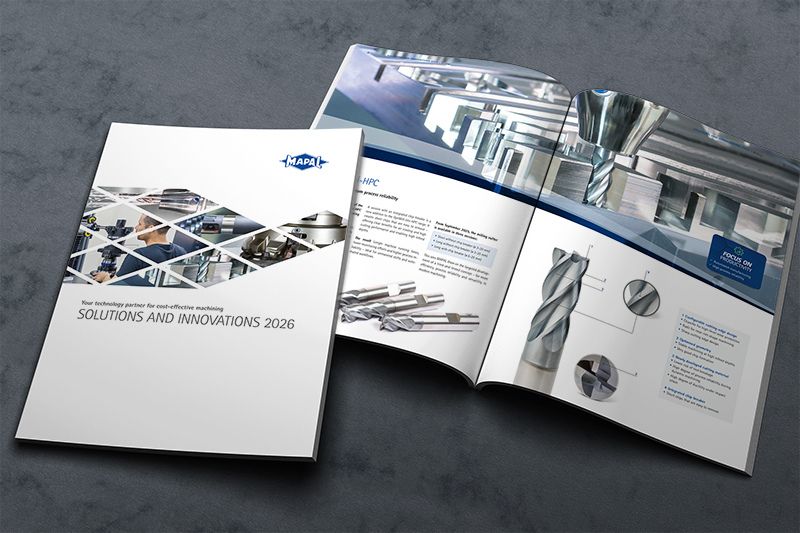09.04.2025
Complete know-how in one part
MAPAL has developed two sample components for the aerospace sector: a valve housing and a torsion joint
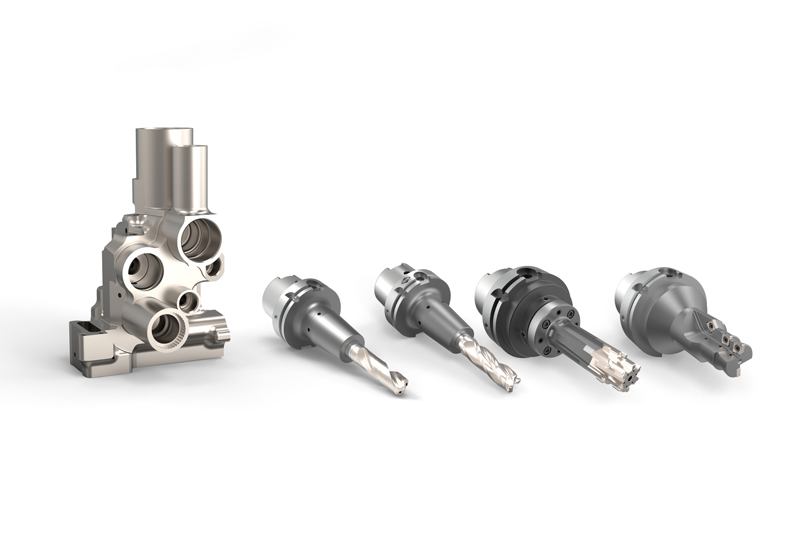
MAPAL has developed two sample components for the aerospace sector. These so-called “generic components” cover all the demanding machining steps that may be involved in the production of hydraulic valve housings made of aluminum or torsion links for landing legs milled from titanium.
Wherever something needs to be moved on an aircraft, there is a valve housing. Flaps, rudders, landing gear, engines and other components are controlled by hydraulics. Every plane has many valve housings with different designs. They range from small boxes to blocks measuring half a meter. The machining requirements, however, are similar.
The Generic Component is deliberately not a replica of a customer component
The generic component created by MAPAL measures around 30 x 30 x 30 centimetres and contains all machining steps that may be involved in manufacturing a valve housing, from pre-machining to finishing. It is deliberately not a replica of a customer component but was designed instead based on the machining requirements of various real-life components. Within the group of companies, MAPAL has compiled experience gained worldwide in the machining of such components. All this knowledge has been incorporated into a single sample component.
This involves recommendations from the tool manufacturer for the appropriate machining strategies and cutting data. Several different options are often available to solve a particular problem. Either a PCD tool or a fine boring tool can be used to ream a bore. Or, alternatively, multi-bladed reamers. Each solution has its advantages. The decisive factor is always which advantages suit the customer's situation.
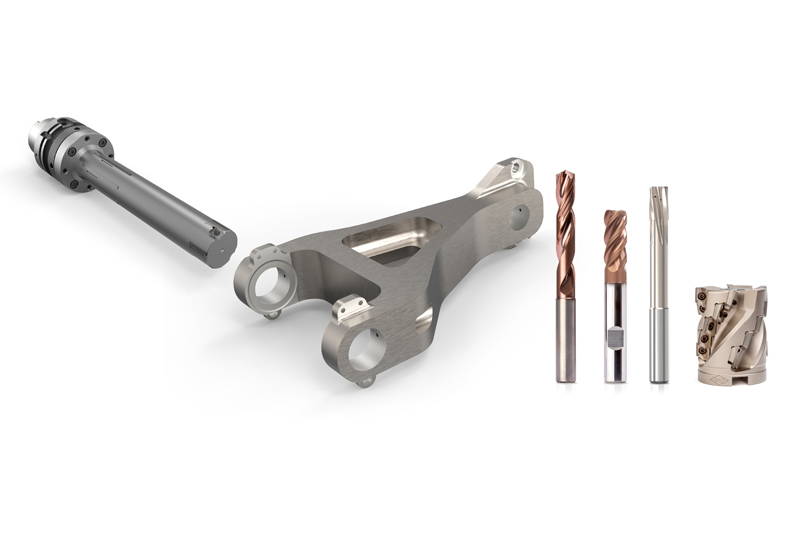
This involves recommendations from the tool manufacturer for the appropriate machining strategies and cutting data. Several different options are often available to solve a particular problem. Either a PCD tool or a fine boring tool can be used to ream a bore. Or, alternatively, multi-bladed reamers. Each solution has its advantages. The decisive factor is always which advantages suit the customer's situation.
Valve housings for aerospace are more complicated components than hydraulics for construction machinery
Valve housings for aerospace are more complicated components than those used in other areas, such as hydraulics for construction machinery. MAPAL used over 130 different custom tools for a single housing type in the most complex customer project to date. Manufacturing often involves very thin-walled parts as it is important to minimize weight in the aviation industry. Other challenges include deep bores with cross bores or slots that create interrupted cuts. In addition, the machining of the aluminum used, with its low silicon content, produces very long chips that are difficult to break.
Another generic component that MAPAL has developed for the aerospace market segment is a torsion link for the main landing gear on the aircraft. It connects the two cylindrical parts of the landing leg. This design allows the damper cylinder to retract and extend without twisting. This part is also available in various designs.

Torsion links are made of titanium - because of the high loads
MAPAL uses its medium-sized sample part to model all real requirements. Due to the resulting high loads, torsion links are made of titanium. The low thermal conductivity of the material results in high temperatures during machining, which have a negative impact on tool life. In addition to optimized coating and cutting-edge preparation, the right machining strategy is essential here.
With the generic components for aerospace, MAPAL is pursuing a concept that has already proven its worth in the automotive sector. Here too, demanding components were identified which can be machined using the company’s tools. A large part of automotive technology is now covered by the appropriate generic components. With the help of generic components, MAPAL can also demonstrate what it is technologically capable of in the aerospace sector.
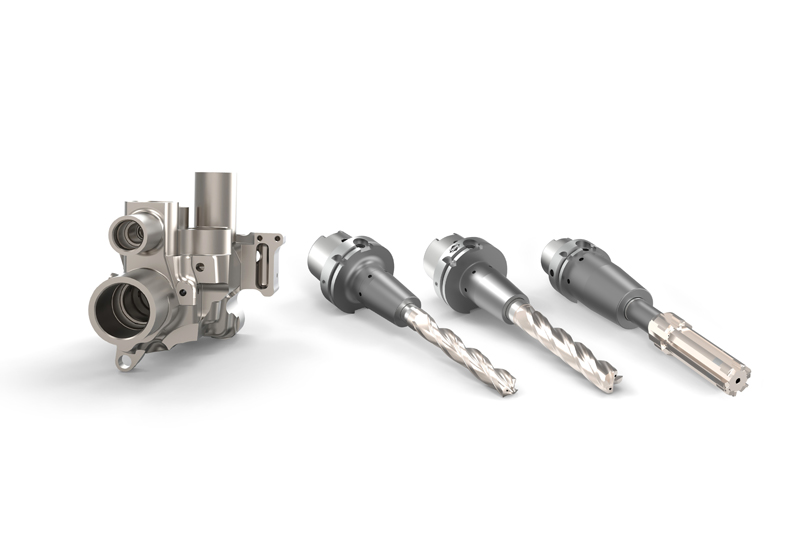

Contact
Mathias Ostertag Public Relations mathias.ostertag@mapal.com Phone: +49 7361 585 3566
